Bankside and Southwark
The neighbourhood in which I lived when I was at the LSE. Urban renewal creates an interesting combination of architecture: the old power station, the rebuilt Globe Theatre, a series of seventeenth century houses, and modern high-rise construction. Bankside is the section of the Borough of Southwark that actually fronts the Thames.
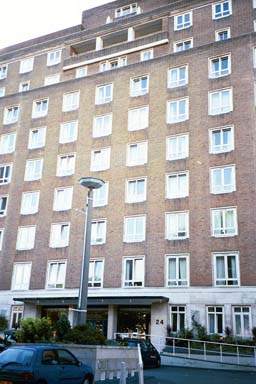
Bankside House
LSE residence. I was in the wing to the right. The building is huge and houses something like 600 students.
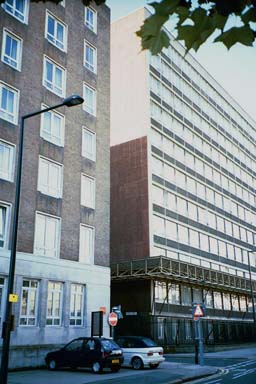
Christopher House
The 1960s monster of an office building that surrounds Bankside House. And I do mean surrounds. Two sides get no light because of this monstrosity. My window is down that little ally there between the buildings.
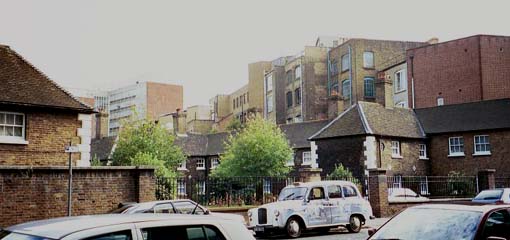
Housing estate
To show the variety of architecture in the area. I can’t date the houses with any certainty. In the background rises Christopher House. Some of the tall buildings at the right have shops and offices.
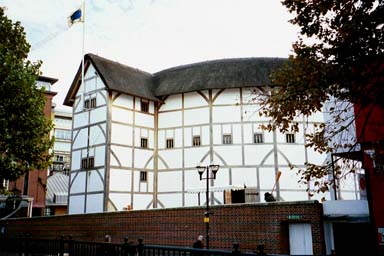
Shakespeare’s Globe
The reconstruction of the Globe theatre. Sadly, I do not seem to have pictures of the three houses that stand to the right of it, between it and the Tate Modern. They date from Shakespeare’s era.

Blackfriars Bridge
Blackfriars is my bridge. I crossed that bridge every day I went to school. At the left can be seen the dome of St Paul’s Cathedral and Victoria Embankment Gardens. In the background are the highrises of the City of London. To the right, an edge of Sea Container House, a massive and quite new office building is just visible. Bankside is just the other side of the Bridge.

Sidewalk art
In front of the Bankside Gallery, starting underneath the railway bridge that runs parallel to Blackfriars Bridge, artists gather to sell their works and in warmer weather, street sellers gather for the tourists. Under the bridge itself, musicians play almost daily. There was one particular homeless man who in a corner of the pavement, always drew this same image of Westminster and the London Eye.
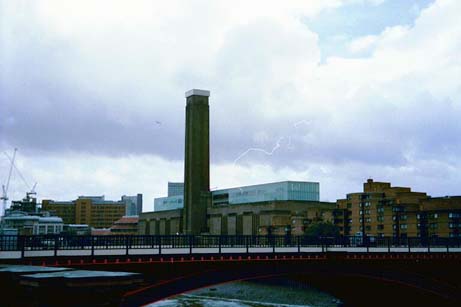
Tate Modern
The old Bankside Power Station became the modern art arm of the Tate Gallery in I want to say 1999. Weird exhibits. Weird. Very weird. The galleries are organised thematically rather than according to chronology or media. It’s an interesting idea, but I’m simply not a fan of anything past 1930. The foreground is blocked off by the railway bridge that terminates at Blackfriars Station on the other side of the river.
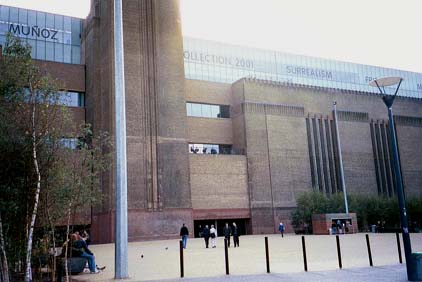
Closeup of Tate Modern river entrance
The museum has two entrances: one ground level facing the river and one below ground at the side. The pavement slopes down to the lower entrance. The river entrance is highly atmospheric: one enters into a small space filled with blue light and strange sound. The lower level entrance is scary in its own right, however. One enters directly into the turbine hall of the power station, which is now empty. The galleries are built into the front only, so that a giant, overwhelming space greets the visitor. The opposite end hosts installations, and there is an information desk not far from the door, but the space is six stories high and otherwise empty. I have never been so freaked out over a building in my life.
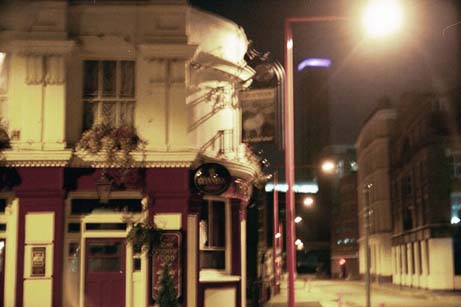
The White Stag Pub and Tate Modern
The only reason I took this picture was an attempt at showing the colours with which the Tate Modern is lit at night. The pub is on Suffolk Street and is generally frequented by the people who work in the offices in the area. As for the real subject of the photo, the smokestack is lit in purple, while the upper floors, the top of which is a restaurant, are lit in green.
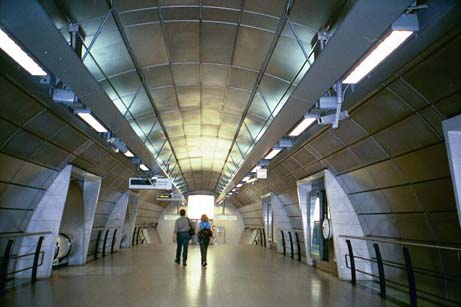
Southwark Tube Station
My nearest Tube station (Blackfriars, across the river, was about the same distance). The Jubilee Line extension, completed in 2000 (I think -- maybe 1999), has a series of these futuristic stainless steel stations, starting at Westminster and probably continuing to the terminus. I’ve only seen as far as Canary Wharf. Several of these stations have won architectural awards, including Southwark.,